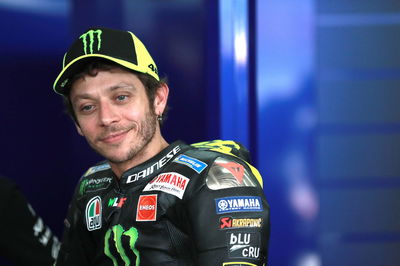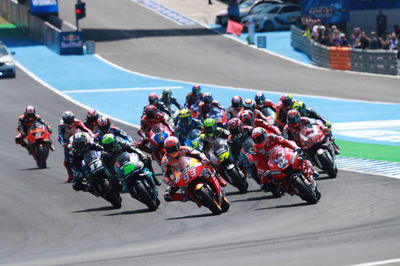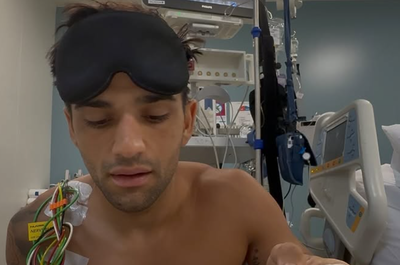Rossi: Biggest change in race suits the ‘RoboCop’ airbags
Having started his career with leather race suits and motocross-style boots, Valentino Rossi has seen more than most in the development of racing technology and one feature that’s impressed him has been the ‘RoboCop’ airbag safety device.

Having started his career with leather race suits and motocross-style boots, Valentino Rossi has seen more than most in the development of racing technology and one feature that’s impressed him has been the ‘RoboCop’ airbag safety device.
Rossi, a lifelong Dainese athlete, has given the Italian sportswear brand a tour of his ‘Secret Room’ where he stores and displays all his race suits, kits and helmets stretching back to when he started racing in 1993. In the video series released by Dainese, the nine-time world champion gives insight into how the race suits he’s worn have changed over the years and how he has adapted with it.
The Italian rider picked out the introduction of airbags in race suits as a key development which he admits he didn’t initially appreciate as the first designs carried extra weight and restricted movement.
But as the technology has improved and Rossi has helped adjust the system, which became mandatory for all MotoGP riders in 2018, the 41-year-old says his mind has been changed about the device given the extra protection it provides during crashes.
“It was 2009 to 2010 when we had the first suit with an airbag. Everything changed, the whole of the airbag system was in the front and you could see it, unlike today’s suits, where you can’t see it at all. The hump of the suit has also changed. It had to hold the whole system inside, the whole control unit.
“This was a huge step forwards at the time and, if I’m honest, at the start I didn’t fully understand because it seemed like something that could help a little but nothing major.
“However, over the years Dainese managed to really improve the system and now you don’t even notice whether the suit has an airbag or not. But it provides an incredible level of safety, because when you fall, even if you feel fine, the next day when you get up in the morning everything hurts.
“But with this suit, all on the shoulders and the upper body, it’s really safe and an incredible improvement in terms of safety.”
Rossi also feels the airbag LED detection system, which displays when a charge has gone off and if the system is live, has helped improve safety for the rider wearing it and the competitors around them thanks to the greater visibility.
“With the latest suits, you can hardly see the airbag at all, apart from the sensor which tells you whether it’s on or off, but the suit is exactly the same,” he explained.
“Another innovation is the rear LED which lights up when the airbag inflates. That also ensures that the other riders can see the riders in front when there’s low visibility.
“So, if someone falls in front of you in the rain or you can’t see far ahead this LED helps you see them. It’s also very RoboCop!”
As Rossi assesses his future in the sport, he will need to wait until at least May to return to MotoGP action due to the ongoing postponements amid the coronavirus pandemic.
Rossi remains in Italy during the country’s lockdown, with Spain also introducing strict travel measures, which has denied any teams the chance to organise private testing before the planned resumption of the 2020 MotoGP season at the Spanish Grand Prix at Jerez on May 3.











